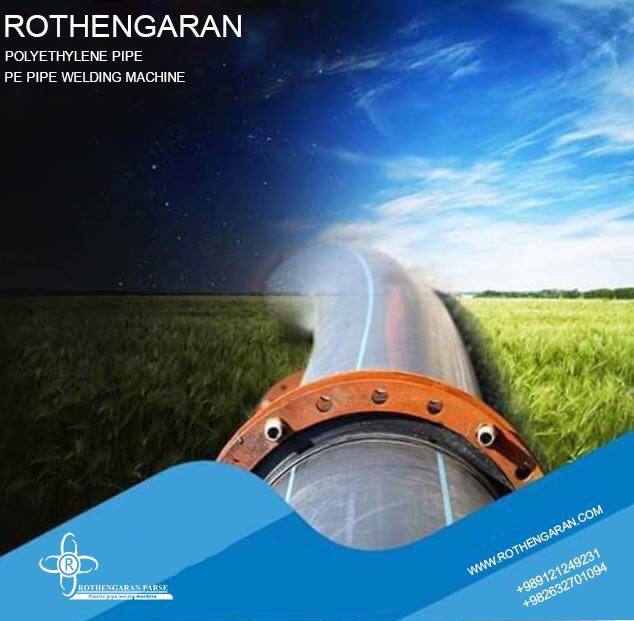The best polyethylene pipe
The “best” polyethylene pipe depends on your specific application, as different types and grades of polyethylene (PE) pipes are designed for various purposes. Below are some factors to consider when choosing a polyethylene pipe and some popular options:
Types of Polyethylene Pipe
- PE100: High-performance material commonly used for water and gas distribution systems. It offers high resistance to pressure, cracking, and environmental stress.
- Applications: Municipal water supply, gas pipelines, and industrial use.
- Benefits: Long lifespan, high durability, and eco-friendly.
- PE80: Slightly lower performance than PE100 but still widely used for similar applications.
- Applications: Medium-pressure water and gas distribution.
- Benefits: Cost-effective and easier to install.
- PEX (Cross-linked Polyethylene): A more flexible type of polyethylene often used in plumbing and heating systems.
- Applications: Residential plumbing, radiant floor heating, and hot water distribution.
- Benefits: High-temperature resistance and flexibility.
- HDPE (High-Density Polyethylene): Known for its strength, flexibility, and corrosion resistance.
- Applications: Drainage, irrigation, and industrial piping.
- Benefits: Lightweight, durable, and resistant to chemicals and UV radiation.
Key Factors to Consider
- Application: Choose the pipe based on its intended use (e.g., drinking water, gas, irrigation).
- Pressure Rating: Ensure the pipe meets the required pressure rating (PN rating).
- Size and Diameter: Select the correct size based on flow requirements.
- Standards and Certifications: Look for compliance with ISO, ASTM, or other relevant standards.
- Durability: Assess resistance to cracking, temperature, UV exposure, and chemicals.
Top Brands and Manufacturers
- JM Eagle: Known for high-quality HDPE pipes for water and sewer systems.
- WL Plastics: Specializes in durable HDPE pipes for industrial and municipal applications.
- ADS (Advanced Drainage Systems): Offers pipes for drainage and irrigation systems.
- Performance Pipe (a division of Chevron Phillips Chemical): Produces PE pipes for gas, water, and industrial use.
Applications and Specific Recommendations
- Potable Water Distribution
- Use: PE100 or HDPE pipes are excellent for municipal and residential water supply due to their durability and ability to resist corrosion.
- Recommended Brands: JM Eagle, Performance Pipe, and IPEX.
- Gas Distribution
- Use: PE100 or PE80 pipes with appropriate certifications for gas systems.
- Features: High resistance to pressure and safety under high-stress conditions.
- Recommended Brands: WL Plastics, Polypipe, and Performance Pipe.
- Irrigation and Agricultural Use
- Use: HDPE pipes are highly durable and lightweight, making them ideal for large-scale irrigation systems.
- Features: UV-resistant and flexible, allowing easy installation in uneven terrains.
- Recommended Brands: ADS, DripWorks, and Netafim.
- Plumbing and Heating Systems
- Use: PEX pipes are preferred for residential plumbing, radiant floor heating, and other indoor applications due to their flexibility and resistance to temperature extremes.
- Recommended Brands: Uponor, SharkBite, and Viega.
- Drainage and Sewer Systems
- Use: HDPE or dual-wall corrugated polyethylene pipes are commonly used for stormwater management and sewer systems.
- Features: High flow efficiency, lightweight, and excellent chemical resistance.
- Recommended Brands: ADS, Hancor, and Lane Enterprises.
- Industrial Applications
- Use: HDPE pipes are ideal for transporting chemicals, slurries, or wastewater in industrial setups.
- Features: Excellent chemical resistance and high durability.
- Recommended Brands: ISCO Industries, WL Plastics, and Chevron Phillips.
Additional Tips for Selecting Polyethylene Pipes
- Climate Considerations: If the pipes will be exposed to sunlight, ensure they are UV-stabilized or covered for long-term durability.
- Jointing Methods: Check if the installation requires heat fusion, mechanical joints, or other techniques.
- Longevity: Consider the expected lifespan of the pipe material (e.g., PE100 can last up to 100 years in ideal conditions).
- Budget: Balance quality and cost, especially for large-scale projects.
Installation and Maintenance Considerations
Proper installation and maintenance are critical to ensure the long-term performance of polyethylene pipes. Here are some tips to optimize their use:
Installation Best Practices
- Trenching and Bedding:
- Ensure the trench is free of sharp objects that could damage the pipe.
- Use fine-grain material like sand or gravel for bedding to protect the pipe from pressure and external damage.
- Jointing Methods:
- Heat Fusion: Most common for HDPE and PE100 pipes. Provides a leak-proof joint when done correctly.
- Mechanical Couplings: Useful for joining pipes of different materials or for temporary installations.
- Electrofusion: Ideal for precise and strong connections, often used in gas and water systems.
- Expansion and Contraction:
- Polyethylene pipes expand and contract with temperature changes. Allow for flexibility in the installation to accommodate these changes.
- Alignment:
- Ensure the pipe is laid in a straight alignment to minimize stress points, especially in high-pressure systems.
- Pressure Testing:
- Test the system after installation to confirm it can handle the required pressure without leaks or deformations.
Maintenance and Repairs
- Regular Inspections:
- Periodically inspect the system for signs of wear, leaks, or environmental damage.
- Damage Control:
- Repair cracks or punctures promptly using approved methods like electrofusion patches or couplings.
- Cleaning:
- For water and sewer pipes, use pipe cleaning tools to prevent clogs and buildup.
- Replacement Planning:
- Monitor the pipe’s lifespan and plan for replacements based on usage, wear, and environmental conditions.
Environmental Considerations
- Recycling: Many polyethylene pipes are recyclable. Ensure old pipes are disposed of or recycled responsibly.
- Eco-Friendliness: Choose pipes manufactured using sustainable practices or those certified for low environmental impact.
Conclusion
Choosing the best polyethylene pipe involves considering the specific requirements of your project, including application, pressure rating, durability, and budget. PE100 and HDPE pipes are versatile for most applications, while PEX is ideal for plumbing and heating. Ensure proper installation and maintenance to maximize their lifespan and efficiency.
Our company, as a leading provider of polyethylene pipe services, with a long history, is ready to serve customers throughout the Middle East.
Please contact us via email or website contact forms to establish contact.

